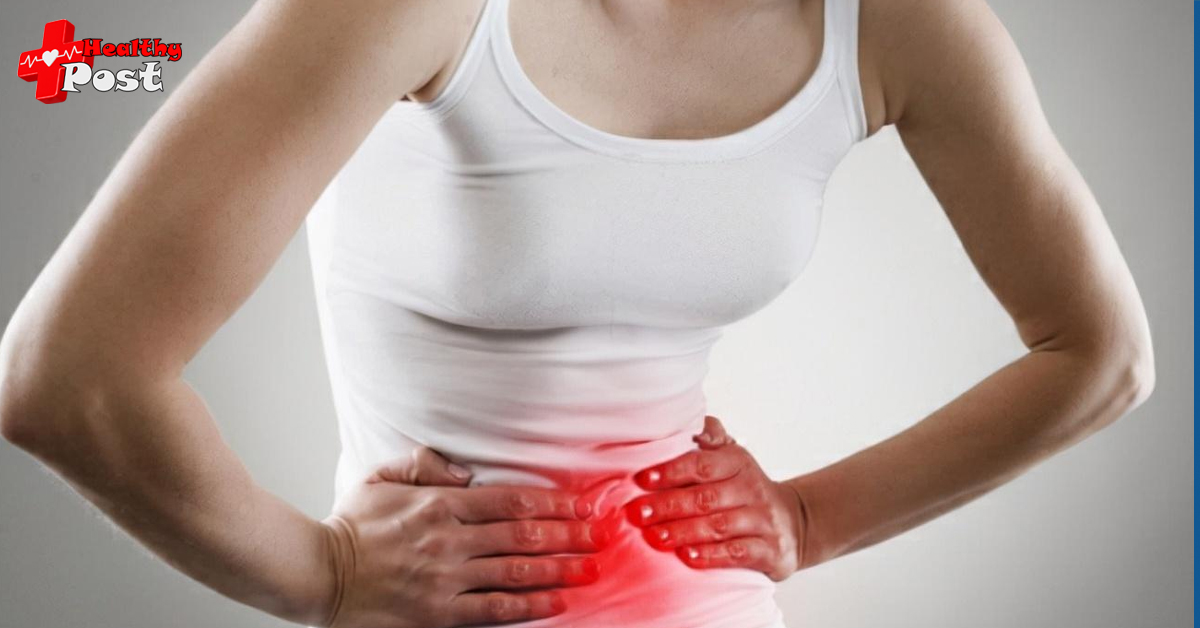
Menstrual Cramps ICD 10: Understanding Symptoms, Causes, and Treatment Options
Menstrual cramps are a common problem many women face each month. The menstrual cramps ICD 10 code helps doctors track and treat this issue. It is important to understand the symptoms and causes for better care. Many people think cramps are normal and do not need treatment. But, severe pain may point to a bigger health problem. Proper diagnosis using the menstrual cramps ICD 10 code is the first step toward relief.
Doctors use the ICD 10 code for menstrual cramps to record and analyze patient data. This helps in giving better treatment. A clear diagnosis avoids confusion with other similar conditions. It also ensures women get the help they need without delay.
Many people still believe that painful periods are something women must endure. This is a harmful myth. In reality, strong cramps can disrupt daily life and may need medical attention. Women should not ignore repeated or intense pain.
Menstrual pain affects around 80% of women at some point in their lives. About 10% suffer from pain so severe it affects daily activities. These numbers show how widespread this issue is. Accurate coding with menstrual cramps ICD 10 helps in managing these cases better.
Understanding the causes of cramps is key. Common causes include hormonal changes, endometriosis, or fibroids. Identifying the cause helps choose the right treatment. From painkillers to lifestyle changes, many options can offer relief.
Below is a quick look at how menstrual pain affects women:
| Severity of Pain | Percentage of Women Affected |
|---|---|
| Mild | 40% |
| Moderate | 30% |
| Severe | 10% |
This article will guide you through symptoms, causes, and treatment options. Learn how the menstrual cramps ICD 10 code can help improve health outcomes.
What is Menstrual Cramps ICD 10?

The menstrual cramps ICD 10 code is used to classify and record menstrual pain in medical records. In the ICD 10 system, menstrual cramps are listed under code N94.4 for primary dysmenorrhea and N94.6 for secondary dysmenorrhea. These codes help doctors and healthcare systems track menstrual-related conditions.
Why ICD 10 Codes Matter
ICD 10 stands for the International Classification of Diseases, 10th Revision. It is a global system created by the World Health Organization (WHO). ICD 10 codes are used to record diseases, symptoms, and conditions in a standard way. This makes it easier to share health data and offer accurate care.
How Doctors Use ICD 10 for Menstrual Cramps
Doctors use the menstrual cramps ICD 10 code during checkups and medical exams. When a patient reports period pain, the doctor checks symptoms and assigns the correct ICD 10 code. This helps in several ways:
- Tracking and Monitoring: Doctors can track the condition over time using the code.
- Insurance and Billing: Insurance companies need ICD 10 codes to process claims.
- Research and Statistics: Health agencies use these codes to study how common certain issues are.
Using the correct menstrual cramps ICD 10 code improves diagnosis, care, and health outcomes. It also helps detect patterns in women’s health and shapes better treatment plans.
Symptoms of Menstrual Cramps ICD 10
The menstrual cramps ICD 10 code helps identify and track period pain symptoms. Menstrual cramps often begin 1–2 days before the period starts. Pain usually lasts for 2–3 days but may last longer in severe cases.
Common Menstrual Cramps Symptoms
- Throbbing or cramping pain in the lower belly
- Pain that may spread to the lower back and thighs
- Feeling of pressure in the belly
Pain Levels Explained
| Pain Level | Description |
|---|---|
| Mild | Slight discomfort, no effect on daily life |
| Moderate | Noticeable pain, may limit activity |
| Severe | Intense pain, often requires rest or care |
Understanding pain levels helps doctors choose the right care using the menstrual cramps ICD 10 system.
Other Related Symptoms
Menstrual cramps are often more than just pain. Many women also experience:
- Nausea: A sick feeling or upset stomach
- Fatigue: Feeling tired or having low energy
- Headaches: Mild to severe head pain
- Dizziness: Feeling lightheaded or weak
- Diarrhea: Loose or frequent bowel movements
These symptoms can worsen during heavy flow days. Tracking them helps doctors decide if the pain is normal or linked to another issue like endometriosis or fibroids.
Using the right menstrual cramps ICD 10 code ensures women get the correct diagnosis and treatment. Recognizing symptoms early can lead to faster relief and better health.
Causes of Menstrual Cramps ICD 10
The menstrual cramps ICD 10 code helps identify the type and cause of period pain. There are two main types of menstrual cramps: primary and secondary dysmenorrhea.
Primary vs. Secondary Dysmenorrhea
- Primary dysmenorrhea is common in teens and young women. It is not caused by another health problem. The pain is usually due to natural hormone changes.
- Secondary dysmenorrhea is caused by an underlying medical condition. It often starts later in life and causes stronger, lasting pain.
Doctors use the correct menstrual cramps ICD 10 code to tell the difference and choose the right treatment.
Common Causes of Menstrual Cramps
- Prostaglandins: Hormone-like substances that cause muscles in the uterus to contract
- Heavy periods: More bleeding often means more pain
- Lack of exercise: Can lead to poor blood flow and stronger cramps
- Stress: May increase pain or make symptoms worse
Conditions Linked to Severe Cramps
Some medical issues can cause intense or long-lasting menstrual pain:
| Condition | Description |
|---|---|
| Endometriosis | Tissue like the uterine lining grows outside the uterus |
| PCOS | Hormonal disorder that affects ovulation and can cause pain |
| Fibroids | Non-cancerous growths in the uterus that can cause cramping |
| Pelvic Infections | Infections can lead to inflammation and severe menstrual pain |
These conditions are often linked with secondary dysmenorrhea. Identifying the cause with the right menstrual cramps ICD 10 code leads to faster relief and better long-term care.
Understanding the cause is the first step toward managing menstrual pain effectively.
How Menstrual Cramps ICD 10 Helps in Diagnosis
The menstrual cramps ICD 10 code plays a key role in identifying and managing period pain. Doctors use it to record symptoms, guide treatment, and support follow-ups.
ICD 10 in Medical Records
Doctors add the menstrual cramps ICD 10 code to a patient’s medical file after examining symptoms. This helps:
- Track the condition over time
- Compare pain patterns in future visits
- Share health records between clinics or hospitals
This code makes sure all medical teams speak the same “language” when reviewing patient history.
ICD 10 and Insurance Claims
The menstrual cramps ICD 10 code is also vital for billing. Insurance companies need it to:
- Approve coverage for treatments
- Process claims for doctor visits, tests, or medicines
- Avoid claim rejection due to vague or missing diagnosis
Accurate coding helps patients avoid delays in getting care or medication.
Example of a Diagnosis Process
Let’s look at how a doctor might diagnose a patient with period pain:
- Patient Visit
A woman visits her doctor with sharp lower belly pain before and during periods. - Medical History & Exam
The doctor asks about her symptoms, period length, and pain level. - Diagnosis
The doctor finds no signs of another condition. She is diagnosed with primary dysmenorrhea. - ICD 10 Code Used
The doctor records the case with the menstrual cramps ICD 10 code N94.4. - Follow-Up Plan
Pain relief options are given, and a follow-up is scheduled to track results.
Using the correct menstrual cramps ICD 10 code ensures clear records, better treatment, and smooth insurance processes.
Treatment Options for Menstrual Cramps ICD 10
The menstrual cramps ICD 10 code not only helps diagnose pain but also guides effective treatment. Treatment depends on pain level and cause. Some women find relief with home care, while others need medical support.
Home Remedies for Menstrual Cramps ICD 10
Natural remedies can offer relief for mild to moderate cramps. These methods are safe and easy to try at home.
Heat Therapy
Applying a warm pad to the lower belly helps relax muscles. It improves blood flow and eases pain.
- Use a hot water bottle or heating pad
- Take warm baths to calm muscle tension
Herbal Teas
Certain teas reduce inflammation and relax the body. Popular choices include:
- Chamomile tea: Eases tension and supports sleep
- Ginger tea: Reduces pain and nausea
- Peppermint tea: Helps soothe the stomach
These teas can be taken 2–3 times a day during your period.
Exercise and Movement
Regular exercise improves blood flow and lowers stress. It also balances hormone levels.
- Light activities like walking or yoga can reduce cramp intensity
- Stretching helps relax pelvic muscles
Aim for 20–30 minutes of exercise, 3–4 times a week for best results.
Diet Changes for Cramp Relief
Eating the right foods can reduce period pain. Try these tips:
- Increase omega-3 rich foods like salmon or flaxseeds
- Eat more fruits and vegetables for vitamins and fiber
- Cut back on salt, sugar, and caffeine to reduce bloating and mood swings
Staying hydrated is also key. Drink at least 6–8 glasses of water daily.
These home remedies can reduce the need for medication. However, if pain remains strong, consult a doctor for treatment based on the menstrual cramps ICD 10 diagnosis.
Medications for Menstrual Cramps ICD 10
Using the correct menstrual cramps ICD 10 code helps doctors choose the best medications. Treatment depends on pain severity and the presence of other health conditions.
Over-the-Counter (OTC) Pain Relievers
OTC medications are often the first step for managing mild to moderate cramps. These drugs reduce inflammation and block pain signals.
- Ibuprofen (Advil, Motrin): Reduces cramps and swelling
- Naproxen (Aleve): Offers longer-lasting relief
- Acetaminophen (Tylenol): Eases pain but not inflammation
Take painkillers at the first sign of cramping for best results. Always follow the dose instructions.
Prescription Medications for Severe Pain
If OTC medicine doesn’t work, doctors may prescribe stronger options based on the menstrual cramps ICD 10 diagnosis.
- Stronger NSAIDs: Such as mefenamic acid or diclofenac
- Hormonal birth control: Pills, patches, or IUDs to regulate periods and reduce cramping
- Gonadotropin-releasing hormone (GnRH) agonists: For severe cases linked to endometriosis
- Antidepressants: In rare cases, used to manage pain and mood swings
Doctors will choose medications based on your symptoms and any underlying causes like PCOS or fibroids.
When to Seek Medical Treatment
You should see a doctor if:
- Cramps are too painful to manage with home care
- Pain lasts longer than 2–3 days
- Cramps worsen over time or begin later in life
- You have symptoms like heavy bleeding, dizziness, or fever
These may be signs of secondary dysmenorrhea or another health issue.
With the proper menstrual cramps ICD 10 code, doctors can provide accurate treatment and track your progress. This ensures better results and long-term relief.
Medical Procedures for Severe Menstrual Cramps ICD 10
When home care and medications aren’t enough, doctors may recommend advanced treatments. The menstrual cramps ICD 10 code helps identify the condition and guide proper medical care.
Hormone Therapy
Hormone therapy helps regulate or stop the menstrual cycle. This reduces or prevents cramps.
- Birth control pills: Lower prostaglandin levels and thin the uterine lining
- Hormonal IUDs: Release hormones directly into the uterus for long-term relief
- Progesterone-only treatments: Balance hormone levels and reduce bleeding
These therapies are often used for primary dysmenorrhea or mild endometriosis. They help lessen pain over time.
Surgical Treatments for Underlying Conditions
When cramps are caused by conditions like endometriosis or fibroids, surgery may be needed.
- Laparoscopy: Minimally invasive surgery to remove endometrial tissue or cysts
- Myomectomy: Removes fibroids while preserving the uterus
- Endometrial ablation: Destroys the lining of the uterus to reduce bleeding and cramping
Doctors use the menstrual cramps ICD 10 code to support surgical treatment plans and insurance approvals.
Advanced Procedures for Chronic Pain
For severe or long-lasting pain, other medical procedures may be considered:
- Nerve block injections: Target pain signals in the pelvic region
- Physical therapy: Focuses on pelvic floor muscles to reduce tightness and pain
- Neuromodulation therapy: Uses electrical signals to reduce chronic pelvic pain
These methods are usually recommended when all other treatments fail.
Using the right menstrual cramps ICD 10 code ensures women receive the most effective care based on their condition. Early diagnosis and proper treatment can greatly improve quality of life.
Lifestyle Changes to Prevent Menstrual Cramps ICD 10

Lifestyle habits play a major role in managing and preventing cramps. Alongside the menstrual cramps ICD 10 diagnosis, simple daily changes can make a big difference in pain levels and overall menstrual health.
Dietary Modifications for Menstrual Health
A healthy diet can reduce inflammation and balance hormones. This helps ease and prevent cramps.
- Add omega-3 fats: Found in fish, flaxseeds, and walnuts
- Eat more fruits and vegetables: Rich in vitamins, fiber, and antioxidants
- Limit processed foods: Reduce sugar, salt, and refined carbs
- Include magnesium-rich foods: Such as leafy greens, bananas, and almonds
Eating balanced meals regularly helps maintain energy and support hormone function.
Stress Management to Reduce Cramps
Chronic stress affects hormone balance and can worsen menstrual pain. Managing stress helps reduce both physical and emotional discomfort.
- Practice deep breathing or meditation
- Try gentle yoga or stretching daily
- Take time for relaxing activities like reading or walking in nature
These habits support the body and mind, helping lessen cramp intensity.
Hydration and Sleep Impact on Pain
Staying hydrated and well-rested can improve how the body handles menstrual pain.
- Drink 6–8 glasses of water daily: Prevents bloating and muscle cramps
- Avoid too much caffeine or alcohol: These can worsen dehydration and mood swings
- Get 7–9 hours of sleep nightly: Proper rest supports hormone health and reduces fatigue
Healthy routines, combined with a proper menstrual cramps ICD 10 diagnosis, create a strong foundation for long-term relief. Simple changes today can lead to fewer cramps tomorrow.
When to See a Doctor for Menstrual Cramps ICD 10
While most cramps are normal, some signs point to a more serious issue. Knowing when to seek help is important. The menstrual cramps ICD 10 code helps doctors diagnose and treat pain correctly.
Signs of Abnormal Menstrual Cramps
See a doctor if you experience any of these:
- Cramps that do not improve with pain relief
- Pain that lasts longer than 3 days
- Cramps that get worse over time
- Pain that starts suddenly after years of mild periods
- Heavy bleeding or passing large clots
- Cramps with nausea, dizziness, or fever
- Pain that interferes with daily activities
These may be signs of conditions like endometriosis, fibroids, or pelvic infections.
When ICD 10 Diagnosis Is Necessary
A menstrual cramps ICD 10 diagnosis is needed when:
- Pain is chronic or severe
- Symptoms are linked to another condition
- You need insurance coverage for treatment or tests
- A clear medical record is required for ongoing care
The ICD 10 code helps your doctor track your condition and choose the best treatment plan.
Importance of Medical Advice
Getting help from a healthcare provider is important because:
- They can rule out serious conditions
- They offer safe and effective treatments
- They provide tailored care based on your health history
Don’t ignore severe or unusual cramps. With the right care and the correct menstrual cramps ICD 10 code, you can get relief and protect your health.
Conclusion: Understanding Menstrual Cramps ICD 10
In summary, the menstrual cramps ICD 10 code is an essential tool for diagnosing and managing period pain. It helps healthcare providers accurately track symptoms, choose the right treatments, and ensure proper medical care. Whether you experience mild discomfort or severe pain, understanding the causes of cramps and knowing when to seek help is crucial for maintaining good health.
Proper diagnosis is key to receiving effective treatment, whether through lifestyle changes, medications, or advanced medical procedures. By using the correct menstrual cramps ICD 10 code, doctors can provide more accurate care and prevent potential complications.
If cramps disrupt your daily life or worsen over time, it’s important to seek medical advice. Don’t hesitate to reach out to a healthcare professional for guidance. Early diagnosis and treatment can make a significant difference in managing menstrual pain and improving your quality of life.

